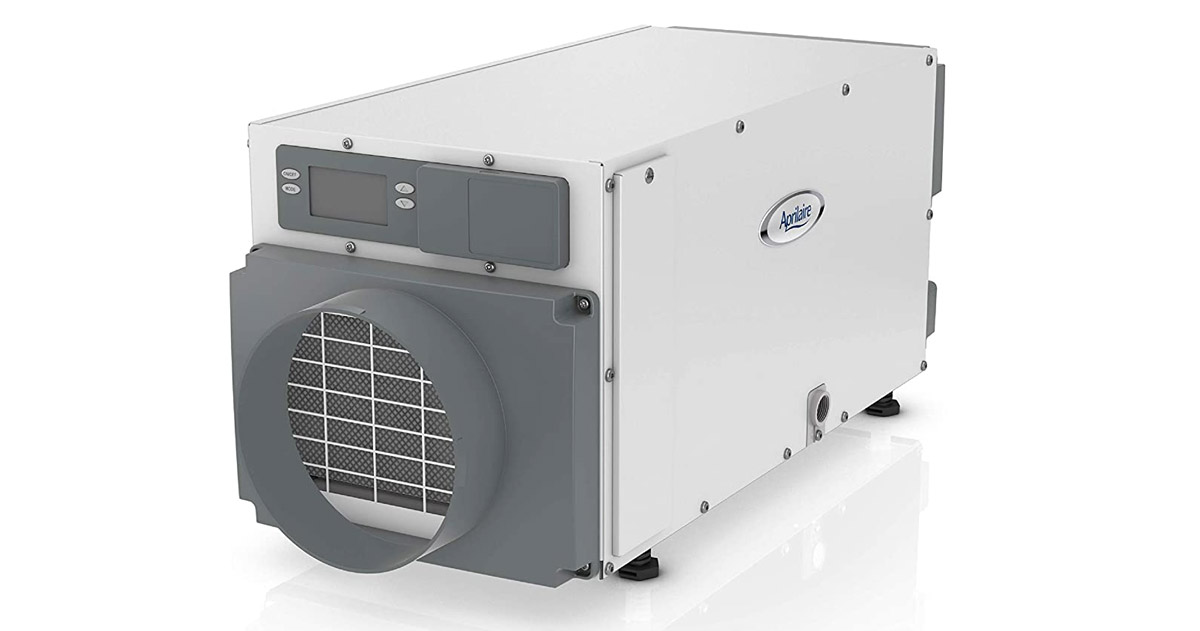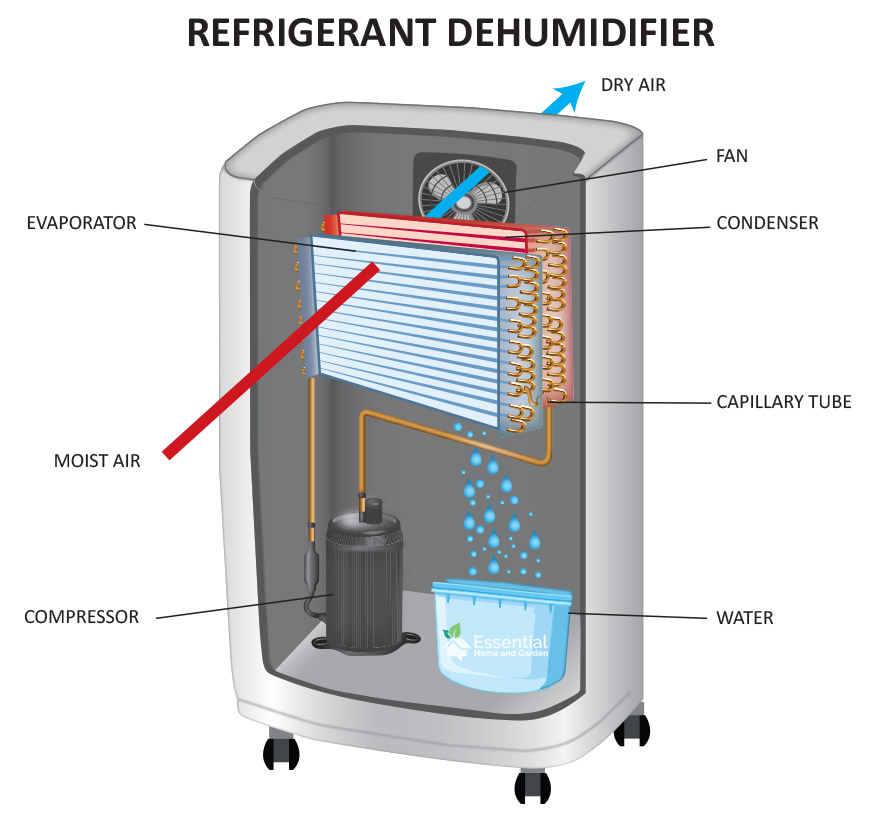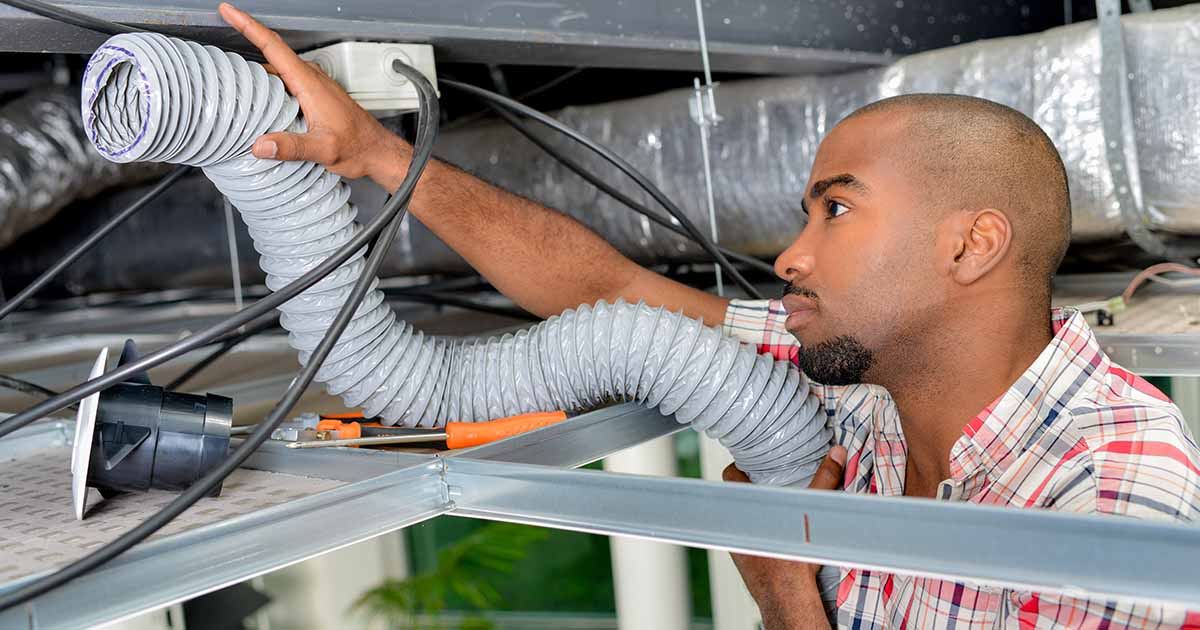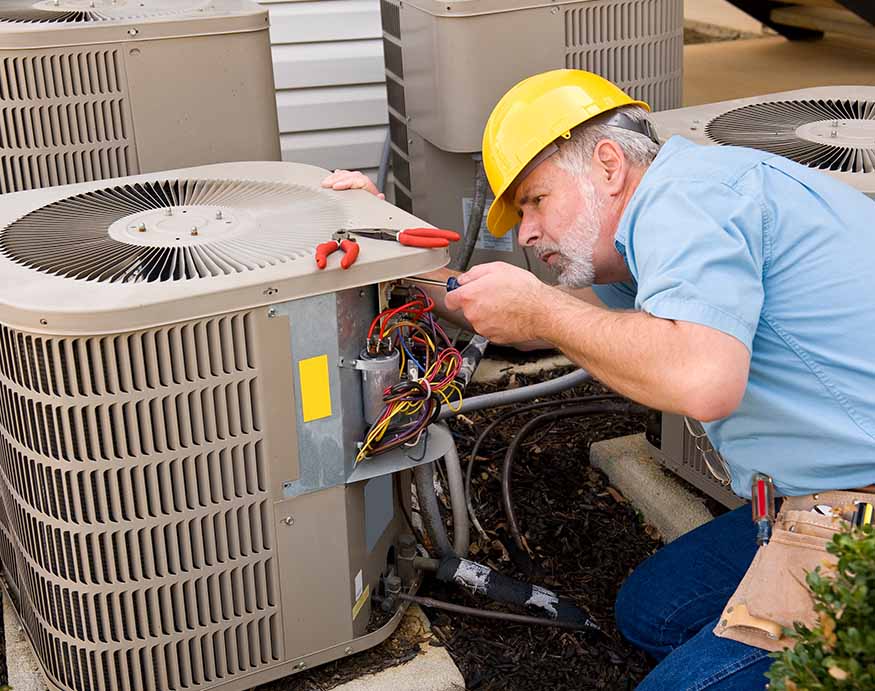Sticky summer nights that leave you tossing and turning. Mysterious mold spots appearing in bathroom corners. That unmistakable musty smell wafting from your basement. If these sound familiar, you’re likely battling excess humidity in your home—and losing the fight with portable dehumidifiers that just can’t keep up.
But what if you could control moisture levels throughout your entire house with a single system? That’s exactly what whole home dehumidifiers offer—and they might be the solution you’ve been searching for.
Key Takeaways
- Whole home dehumidifiers integrate with your HVAC system to remove excess moisture from your entire house, extracting 70-130 pints daily (3-5× more than portable units)
- Maintaining proper humidity (40-50%) significantly reduces allergens, mold growth, and can alleviate asthma symptoms while improving overall comfort
- These systems reduce your AC’s workload, potentially lowering energy bills while extending the lifespan of your HVAC equipment
- Installation costs typically range from $1,500-$3,500 total, with units consuming about $15-$35 monthly in electricity
- With proper maintenance, whole home dehumidifiers last 8-15 years, making them a worthwhile investment for protecting both health and property
Understanding Whole Home Dehumidifiers
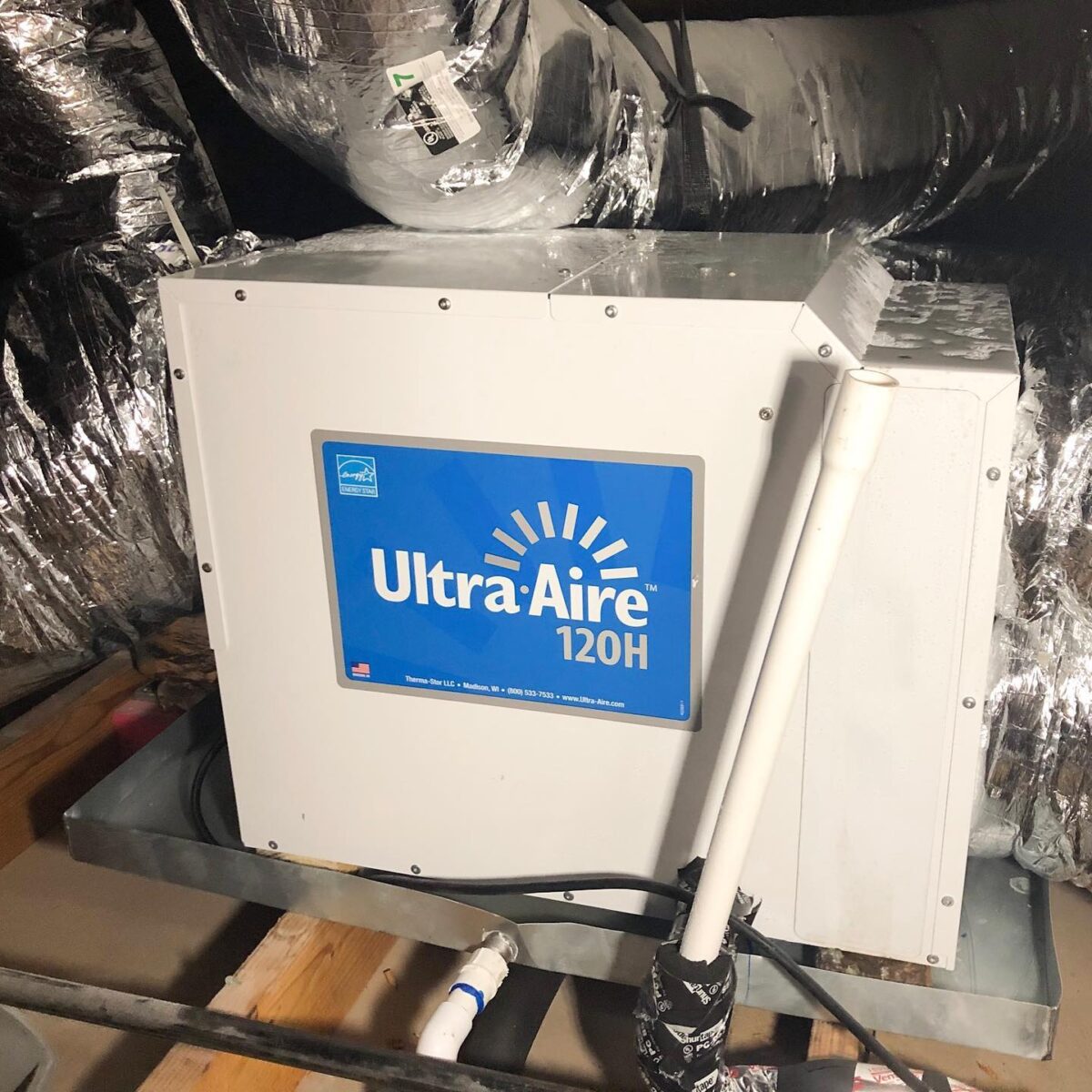 Source: brick_house_design_build
PIN IT
Source: brick_house_design_build
PIN IT
What is a Whole Home Dehumidifier?
Unlike the portable units you drag from room to room, a whole home dehumidifier is a permanent appliance that works with your existing HVAC system.
Think of it as a whole-house solution rather than a band-aid approach.
These systems extract significantly more moisture daily—typically between 70-130 pints compared to the 20-50 pints that portable models handle.
The best part? They operate quietly behind the scenes, usually tucked away in basements, crawl spaces, or alongside your furnace.
How Does a Whole-House Dehumidifier Work?
The science behind these systems is surprisingly straightforward:
- They pull humid air through your return ducts where it passes over cold evaporator coils.
- This causes moisture in the air to condense (much like water droplets forming on a cold glass on a hot day), which then collects and drains away.
- The dried air gets slightly reheated and circulated back through your home’s ductwork.
Integration varies by model—some units work independently with dedicated ductwork, while others connect directly to your existing AC system. The smartest models communicate with your HVAC system through your thermostat for seamlesss coordination.
Modern systems use moisture sensors placed strategically throughout your home to monitor humidity levels. These intelligent devices send real-time information to control systems that adjust operation based on your preferences, typically maintaining humidity between 40-50%. When levels rise above your setpoint, the system kicks on automatically, runs until desired conditions are met, then shuts off to save energy.
The image below shows how a portable dehumidifier works, a whole house dehumidifier uses the same principles, just on a larger scale.
Benefits of Installing a Whole Home Dehumidifier
So is a whole house dehumidifier worth it? Well, the benefits to your home can be substantial.
Enhanced Indoor Air Quality
That sticky feeling when you walk into a humid room isn’t just uncomfortable—it’s a breeding ground for allergens.
High humidity creates perfect conditions for dust mites, pet dander, and pollen to thrive and circulate. Even worse, excess moisture encourages mold and mildew growth, which can spread throughout your home and compromise air quality.
A whole home dehumidifier tackles these problems at their source by removing the moisture these irritants need to flourish. This means fewer allergens floating around in your home’s air and fewer sneezes for you and your family.
Health and Comfort Improvements
Ever notice how a humid day feels hotter than the thermometer suggests? That’s because moisture in the air prevents your body’s natural cooling mechanism—sweat evaporation—from working efficiently.
Research shows that whole home dehumidifiers can significantly reduce asthma and allergy symptoms by eliminating triggers that flourish in damp environments. Maintaining relative humidity between 40% and 60% creates the ideal range for human comfort and respiratory health.
Beyond physical health, there’s something to be said for the psychological comfort of walking into a perfectly balanced home environment.
No more clammy skin or that sticky, oppressive feeling that high humidity brings.
Energy Efficiency Advantages
Here’s something many homeowners don’t realize: your air conditioner is already trying to dehumidify your home, but it’s not designed primarily for that job. When humidity levels are high, your AC works overtime, cycling constantly to remove moisture.
A whole home dehumidifier takes this burden off your HVAC system, allowing it to focus on temperature control—what it does best. The result? Lower energy consumption, reduced utility bills, and an extended lifespan for your expensive AC equipment.
Many homeowners report seeing their energy bills drop noticeibly after installing a whole home dehumidification system, especially during humid summer months.
Protection of Property and Belongings
Moisture doesn’t just affect your health—it’s quietly damaging your home and possessions too. Excess humidity can:
- Warp wooden floors and furniture
- Damage drywall and paint
- Deteriorate structural components over time
- Corrode electronics and appliances
- Destroy important documents and photographs
- Ruin clothing and fabrics
By maintaining proper humidity levels, you’re not just improving comfort—you’re protecting your largest investment (your home) and everything in it.
Think of it as preventative maintenance that saves you from costly repairs down the road.
Market Trends and Technological Advancements
The whole home dehumidifier market is experiencing remarkable growth as more homeowners learn the importance of indoor air quality and moisture control.
According to market projections, global demand continues to climb steadily, driven by increased awareness of humidity’s health impacts and the rise of energy-efficient homes that need better moisture management.
Climate change and extreme weather patterns have further accelerated this market growth, particularly in humid coastal areas and regions seeing increased rainfall. While residential applications dominate the market share, commercial installations are gaining momentum as businesses recognize the benefits of controlling workplace humidity.
The most exciting development is the integration of smart technologies. Today’s whole-home dehumidifiers commonly feature IoT capabilities that let homeowners monitor and control systems remotely via smartphone apps. These intelligent systems automatically adjust settings based on indoor conditions, outdoor weather forecasts, and personal preferences.
Manufacturers now focus on seamless smart home integration, allowing dehumidifiers to communicate with other HVAC components through platforms like Google Home, Amazon Alexa, and Apple HomeKit. This connectivity not only improves convenience but enhances energy efficiency through precise humidity control and scheduling.
As the technology evolves, we’re witnessing innovations in both performance and sustainability, with newer models offering:
- Improved energy efficiency
- Quieter operation
- More environmentally friendly refrigerants
- Enhanced filtration capabilities
- Greater capacity in smaller footprints
These advancements make whole home dehumidifiers more attractive than ever for homeowners looking to improve their living environment.
Selecting the Right Whole Home Dehumidifier
Choosing the appropriate whole home dehumidifier requires thoughtful consideration of several key factors to ensure you get the right system for your specific needs.
Factors to Consider
Home Size and Layout Considerations
The square footage of your home is the primary factor determining the dehumidifier capacity you’ll need. But it’s not just about total area—layout matters too:
- Multi-level homes may have different humidity challenges than single-story dwellings
- Open floor plans allow for better air circulation than compartmentalized layouts
- Basements and crawl spaces often require special attention
- Natural airflow patterns affect moisture distribution
Take time to identify specific problem areas in your home where humidity concentrates. This might mean choosing a system with zoning capabilities or supplemental units for particularly troublesome spaces.
Energy Efficiency Ratings
Look for ENERGY STAR certified models which typically consume about 15% less energy than standard units. Pay attention to the energy factor (EF) rating—higher numbers indicate greater efficiency. Many modern units helpfully display estimated annual operating costs to give you a clearer picture of long-term expenses.
Some models feature variable-speed fans and multi-stage operation that adjust based on humidity levels, further improving efficiency.
Whole-Home Dehumidifier Size Guide
Calculating Dehumidifier Capacity Needs
Dehumidifier capacity is measured in pints of moisture removed per day.
As a general guideline:
- 1,500 sq ft homes: 50-70 pint capacity
- 2,000 sq ft homes: 70-90 pint capacity
- 3,000+ sq ft homes: 90+ pint capacity
However, these are just starting points. You should adjust upward for:
- Very humid climates (like Florida or Louisiana)
- Homes with many occupants (more people = more moisture from breathing, cooking, showering)
- Extensive moisture sources (indoor plants, aquariums, frequent cooking)
- Poorly insulated structures
- Homes with known moisture issues
It’s always better to slightly oversize than undersize, as an undersized unit will run continuously, wearing out faster and using more energy without adequately controlling humidity.
Top Brands and Recommended Models
The market offers several excellent options from reputable manufacturers:
- Carrier and AprilAire excel in ducted systems that integrate seamlessly with existing HVAC setups
- Bryant offers outstanding standalone options with exceptional reliability records
- MeacoDry Arete Two stands out for energy efficiency in smaller applications
- EcoAir Desiccant DD128 performs exceptionally well in colder environments
Other reliable choices include De’Longhi Tasciugo AriaDry, Wood’s MDK26, Russell Hobbs Fresh Air Pro, and the ProBreeze 20L for moderate-sized applications.
When evaluating specific models, look beyond capacity to features like:
- Digital controls with humidity monitoring
- Auto-restart after power outages
- Washable filters for easier maintenance
- Self-diagnosing capabilities
- Extended warranties (which often indicate manufacturer confidence)
The best model for your situation will depend on your specific humidity challenges, home configuration, and budget constraints.
Installation of Whole Home Dehumidifiers
A proper installation ensures your whole home dehumidifier will perform optimally for years to come. This section covers everything from costs to post-installation care.
Cost of Installation
The cost to install a whole home dehumidifier typically ranges from $1,300 to $3,500, including both equipment and labor.
Several factors influence this price:
- Unit size and capacity (larger units cost more)
- Integration complexity with existing HVAC
- Electrical requirements (dedicated circuit needs)
- Drain line installation challenges
- Local contractor rates and market conditions
To budget effectively, obtain multiple quotes from licensed HVAC professionals in your area.
Don’t forget to ask about potential seasonal discounts or rebates from manufacturers or utility companies—these can sometimes offset hundreds of dollars from your total cost.
Many contractors offer financing options, making the investment more manageable when spread over monthly payments. Just be sure to calculate the total cost including interest before committing.
Choosing the Best Installation Location
Proper placement maximizes your dehumidifier’s effectiveness:
- Basements make ideal locations for standalone units since they’re typically the most humid area and often where your HVAC equipment already resides
- Near your HVAC system for ducted models to minimize additional ductwork requirements
- Central locations that allow for optimal air circulation throughout your home
- Areas with sufficient clearance for maintenance access (check manufacturer specifications)
- Locations with easy access to drainage and electrical connections
Avoid placing units in confined spaces or areas where airflow might be restricted by walls, furniture, or other obstacles.
The ideal location will balance efficiency, accessibility for maintenance, and minimal disruption to your living space. Your installer should be able to recommend the best placement based on your home’s specific layout and existing HVAC configuration.
Whole-House Dehumidifier Maintenance and Lifespan
Routine Maintenance Practices
Like any mechanical system, your whole-house dehumidifier requires regular care to maintain peak performance. A consistent maintenance schedule not only ensures efficient operation but also prevents costly repairs and extends equipment life.
Cleaning and filter replacement:
Proper filtration is crutial to your system’s performance. Most manufacturers recommend:
- Cleaning or replacing air filters every 1-3 months depending on usage and dust conditions
- Wiping down exterior surfaces monthly with a damp cloth to prevent dust buildup
- Checking and cleaning condensate drain lines quarterly to prevent clogs that could cause water damage
- Inspecting and cleaning evaporator coils annually (or as recommended by your specific manufacturer)
- Vacuuming dust from intake and exhaust grilles seasonally
Creating a simple maintenance calendar can help you stay on track with these important tasks. Many homeowners schedule dehumidifier maintenance alongside other regular home maintenance activities.
Inspection and troubleshooting tips:
Beyond regular cleaning, keep an eye out for potential issues:
- Monitor humidity levels regularly to ensure the unit is functioning properly
- Listen for unusual noises that might indicate mechanical problems
- Check electrical connections yearly for signs of wear or damage
- Verify that the condensate pump (if equipped) operates correctly
- Schedule professional inspection annually to address potential issues before they become serious problems
If you notice your system running constantly without achieving desired humidity levels, it may indicate a problem with the unit or that your home has unaddressed moisture sources that need attention.
Expected Lifespan of the Device
Factors affecting longevity:
Several key factors influence how long your whole-house dehumidifier will last:
- Installation quality – Properly installed systems typically last longer
- Frequency of use – Units in very humid climates that run constantly may wear out faster
- Environmental conditions – Extremely dusty environments can strain components
- Maintenance diligence – Regular care significantly extends equipment life
- Water quality – In areas with hard water, mineral buildup can affect drain systems
Typical service life expectations:
With proper care, you can expect a well-maintained whole-house dehumidifier to last 8-10 years. Premium models with higher-quality components may extend to 12-15 years with diligent maintenance.
To maximize lifespan:
- Follow manufacturer maintenance schedules religiously
- Address minor issues promptly before they cause component failure
- Consider professional servicing annually
- Replace worn parts as needed rather than waiting for complete system failure
Many homeowners find that the long-term benefits of proper humidity control—including improved air quality, reduced allergens, and protection of home structures—make the investment in regular maintenance well worth it.
Frequently Asked Questions
How Much Does It Cost to Install a Whole-Home Dehumidifier?
The total cost to install a whole-home dehumidifier typically ranges from $1,500 to $3,500. This price breaks down into several components:
- Equipment cost: The dehumidifier itself generally costs between $1,000 and $2,500 depending on capacity and features
- Labor costs: Professional installation ranges from $300 to $700
- Ductwork modifications: If your existing HVAC system needs adaptation, expect additional costs of $200-$500
- Home size: Larger homes require higher-capacity units, which increases the price
Do Whole-House Dehumidifiers Use a Lot of Electricity?
Whole-house dehumidifiers are surprizingly efficient given their coverage area. The average unit consumes about 5-15 kilowatt-hours per day when actively running, which translates to approximately $15-$35 monthly on your electric bill, depending on your local rates.
For perspective, compare this energy usage to alternative solutions:
- Portable dehumidifiers: You’d need multiple units to cover your entire home, potentially using 2-3 times more energy
- Central air conditioning: Running your AC primarily for humidity control uses about 60% more energy than a dedicated dehumidifier
- Electric water heater: Uses approximately 3-4 times more electricity than a whole-house dehumidifier
Energy-efficient models with ENERGY STAR ratings can reduce consumption by up to 30%. Many units also feature humidity sensors that prevent unnecessary operation, further reducing electricity usage.
In humid climates, the energy savings from reduced air conditioner usage often substantially offset the dehumidifier’s electricity consumption.
Are Whole-House Dehumidifiers Effective for Allergy and Asthma Sufferers?
Research confirms that whole-house dehumidifiers significantly benefit allergy and asthma sufferers by maintaining optimal humidity levels (between 40-50%).
The science is compelling:
- Dust mite populations—a major allergen source—decrease by up to 85% when humidity stays below 50%
- Mold spore growth is virtually eliminated at humidity levels under 60%
- Respiratory symptoms improve for 68% of asthma sufferers in properly dehumidified environments
Beyond controlling these common triggers, lower humidity helps reduce airborne particle suspension time, meaning fewer allergens circulating throughout your home.
For maximum benefit in allergy-prone households:
- Pair your whole-house dehumidifier with a high-MERV filter system
- Maintain regular cleaning schedules for bedding and upholstery
- Monitor humidity levels with a reliable hygrometer
- Address any water leaks or moisture sources promptly
Many allergists and pulmonologists now recommend whole-house dehumidification as part of a comprehensive treatment plan for patients with respiratory conditions.
